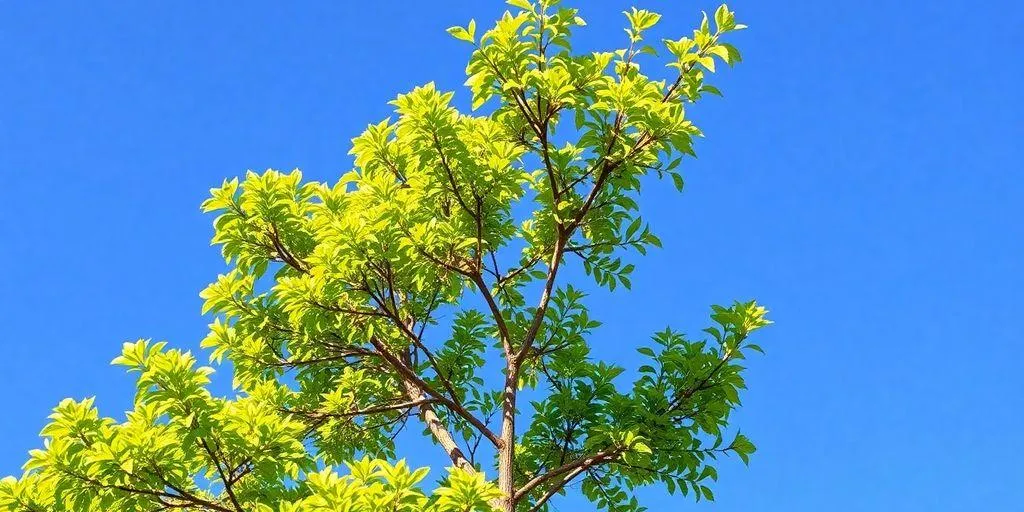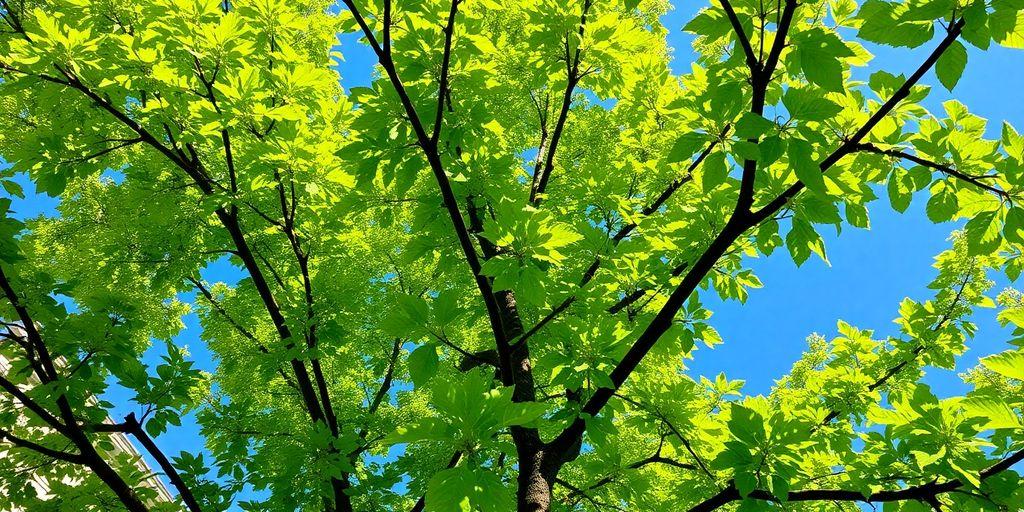Tree Service Montreal
Expert Guide to Tree Crown Reduction in Montreal: Enhancing Aesthetics and Health
Expert guide to Tree Crown Reduction in Montreal: Boost aesthetics & health. Learn techniques & benefits.
Tree crown reduction in Montreal isn't just about making trees look nice; it's about keeping them healthy too. Living in a city can be tough for trees with all the pollution and cramped spaces. That's where crown reduction comes in handy. It's a way to trim trees so they can grow better, stay strong, and even fight off diseases. Plus, a well-trimmed tree can really brighten up a neighborhood. Whether you're a homeowner or a city planner, knowing how to properly reduce a tree's crown can make a big difference. Let's dive into the ins and outs of tree crown reduction, especially here in Montreal.
Key Takeaways
. Tree crown reduction helps trees grow healthier in urban areas like Montreal.
. Proper trimming can prevent diseases and improve the tree's strength.
. Well-maintained trees enhance the beauty of the city landscape.
Understanding Tree Crown Reduction in Montreal

Benefits of Tree Crown Reduction
Tree crown reduction is not just about cutting branches; it's about balance. By reducing the size of the tree's canopy, we can improve light penetration and air circulation, which is great for both the tree and the surrounding environment. This process can help reduce the risk of storm damage, as a smaller crown catches less wind. It also promotes the health of the tree by removing dead or diseased branches, allowing the tree to focus its energy on healthy growth.
Common Misconceptions About Tree Crown Reduction
Many people think crown reduction will harm the tree, but when done correctly, it's quite the opposite. Some believe it's just topping, but topping can actually damage the tree. Crown reduction is more precise and considers the tree's natural growth pattern. Another myth is that it will make the tree look ugly, but skilled arborists can maintain the tree's natural shape while reducing its size.
How Tree Crown Reduction Enhances Urban Aesthetics
In a city like Montreal, where space is limited, crown reduction can make trees fit better into the urban landscape. It helps in maintaining the natural beauty of trees while ensuring they're not overpowering buildings or blocking views. Plus, well-maintained trees add to the aesthetic appeal of neighborhoods, making them more inviting and pleasant to live in.
Regular crown reduction not only supports tree health but also contributes to a more harmonious urban environment. It's about finding a balance between nature and city life, ensuring that trees can thrive without becoming a nuisance.
Techniques and Best Practices for Tree Crown Reduction

Selecting the Right Time for Tree Crown Reduction
Picking the right moment for tree crown reduction is like timing a recipe. We want to make sure the tree isn't stressed out. Most of the time, late winter or early spring is the sweet spot. The tree is dormant, which means less sap loss, and the cuts have time to heal before the growing season kicks in. But hey, every tree is different. Sometimes, a summer trim is just what the doctor ordered, especially if we’re dealing with pests or diseases.
Tools and Equipment for Effective Tree Crown Reduction
Using the right tools makes all the difference. Sharp, clean tools ensure precise cuts and reduce the risk of infections. Here's a quick rundown of what we might use:
. Pruning Shears: For those small, easy-to-reach branches.
. Loppers: Perfect for medium-sized limbs.
. Pruning Saws: Essential for larger branches.
. Pole Pruners: Handy for those hard-to-reach spots.
Keeping our gear in top shape is just as important. Regular cleaning and sharpening go a long way in keeping our trees healthy.
Safety Measures During Tree Crown Reduction
Safety first, always. Climbing trees or using ladders can be risky business. Here’s how we stay safe:
1. Protective Gear: Helmets, gloves, and eye protection are a must.
2. Stable Ladders: Always ensure our ladder is on solid ground.
3. Clear Surroundings: Watch out for power lines and other hazards.
Working with trees is rewarding but demands respect. A little caution goes a long way in ensuring we get the job done without any hiccups.
Impact of Tree Crown Reduction on Tree Health
How Tree Crown Reduction Prevents Tree Diseases
When we talk about tree crown reduction, we're not just looking at aesthetics. It's also about keeping trees healthy. By trimming back the crown, we actually help the tree ward off diseases. Imagine a tree with too many branches; it can become a breeding ground for fungi and pests. By reducing the crown, we allow more air to circulate through the branches, which dries out any dampness that might lead to rot or disease. Plus, more sunlight reaches the inner parts of the tree, boosting its overall health.
The Role of Tree Crown Reduction in Pest Management
Pests can be a real headache for trees, but crown reduction can help. When we trim back the branches, we remove some of the pests' favorite hiding spots. It's like cleaning up a cluttered room—there's less space for pests to hide and cause trouble. This doesn't mean we'll get rid of all the pests, but it's a big step in managing them. Regular trimming also lets us spot any pest problems early on, so we can tackle them before they get out of hand.
Long-term Health Benefits of Tree Crown Reduction
In the long run, crown reduction is like a health check-up for trees. It helps them grow stronger and live longer. By keeping the crown in check, we prevent branches from becoming too heavy and breaking off, which can damage the tree. We also help ensure that nutrients are evenly distributed throughout the tree, so every part gets what it needs to thrive. In the end, a well-maintained tree is not only healthier but also more resilient to storms and other stresses.
Tree crown reduction isn't just a quick fix; it's a long-term investment in the health and beauty of our urban forests. By taking the time to reduce tree crowns properly, we ensure that our trees remain strong and vibrant for years to come.
Choosing Professional Tree Crown Reduction Services in Montreal

Qualities of a Reliable Tree Crown Reduction Service
When it comes to selecting a tree crown reduction service in Montreal, we need to ensure that we're choosing a company with a solid reputation. Experience really matters. A company that's been around for a while has seen it all and knows how to handle different tree species and conditions. We should also check if they're certified and insured. This is crucial because it protects us from liability in case of accidents. Additionally, look for a service that uses up-to-date equipment and follows the latest industry standards.
Questions to Ask Before Hiring a Tree Crown Reduction Expert
Before hiring, there are a few important questions we should ask. First, inquire about their experience with the specific type of trees we have. Then, ask about the techniques they use and why they prefer them. It's also a good idea to request references or testimonials from previous clients. Don't forget to discuss the timeline and what happens if the work is delayed. Finally, clarify the cleanup process post-reduction to ensure no mess is left behind.
Understanding Costs and Value in Tree Crown Reduction Services
Cost is always a factor, but we shouldn't just go for the cheapest option. Instead, we should weigh the cost against the value offered. Sometimes, paying a bit more means getting a more thorough job done. It's wise to get multiple quotes and compare what's included in each. Look out for hidden fees and ensure the quote covers everything from initial assessment to cleanup. Remember, investing in quality service can save us money in the long run by preventing future tree health issues.
Choosing the right service for tree crown reduction isn't just about price; it's about ensuring our trees are cared for by professionals who understand their needs and our priorities. The right choice can make a significant difference in maintaining the beauty and health of our urban landscape.
